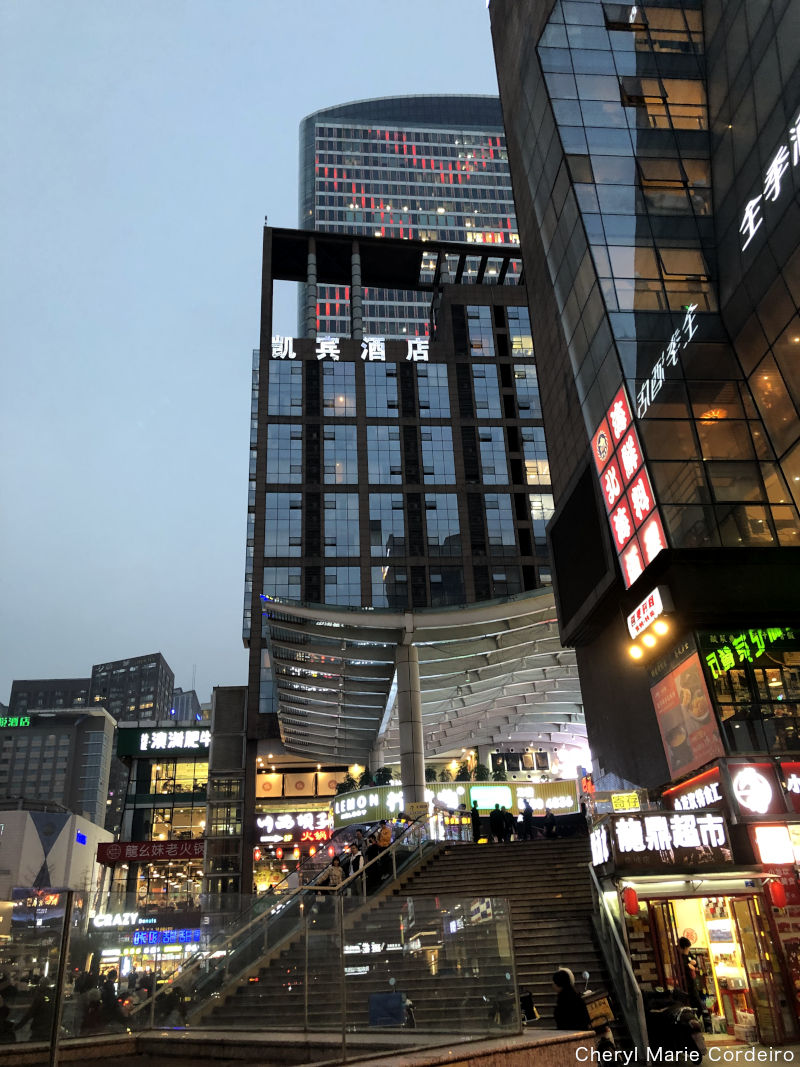Night scene at the intersection of Shangdong Street and Chunxi Road, Chengdu, China.
Text & Photo © CM Cordeiro 2019
According to a World Economic Forum 2019 [1] article Chengdu is among 10 cities that the UN predicts will break the 10 million mark by 2030, bringing the global number of megacities to 43. About 55% of global population live in urban areas today, compared to the less than one-third of the global population living in urban areas in 1950. In one generation to come, the proportion of people living in cities is expected to grow by 68%, adding to our current already crowded cities.
I was last in Chengdu in 2015. During that trip, I had the opportunity to visit some tea houses and to visit the beautifully landscaped Chengdu research base for Giant Pandas [2] that had me in cuteness overload observing the pandas munch on bamboo, else doing absolutely nothing at all. Compared to Shanghai, Chengdu feels a little more spacious, notable when standing at a street junction, looking out at a four street wide on all sides crossing. During the drive in from the airport to the hotel, the sheer number of apartment buildings and the extensive housing landscape in this city, is something of a human engineering marvel. The city is organized and efficient, even if very large. Navigating the city is little hassle because apart from a well connected public transportation system, you will most of the time be able to flag down a taxi. And if the Big Mac Index [3] can be used to guage cost of living across countries, perhaps within countries, the Taxi Index can likewise be used to caliber cost of living across cities in a single country. If that is fairly accurate, then Chengdu offers slightly more affordable living than Shanghai.
In terms of dining, when in Chengdu, you have to Sichuan hotpot, if only out of curiosity for first timers to the city. There are many hotpot restaurants in the city but the waiting time for the more renowned restaurants can be long, ranging between forty minutes to an hour. The individual dishes to order for a hotpot meal is vast. Dishes arrive raw for the intention of cooking in various types of hotpot soups that range from mild to extremely spicy, the fun of which is to discover your favourite blend of flavours, and masochism threshhold. Tripe and tofu seem like favourite dishes to the hotpot soups, and were present in almost every table in the restaurant where I found myself. A perfect complement to the spicy soups is a tall, cold bottle of Tsingtao beer.
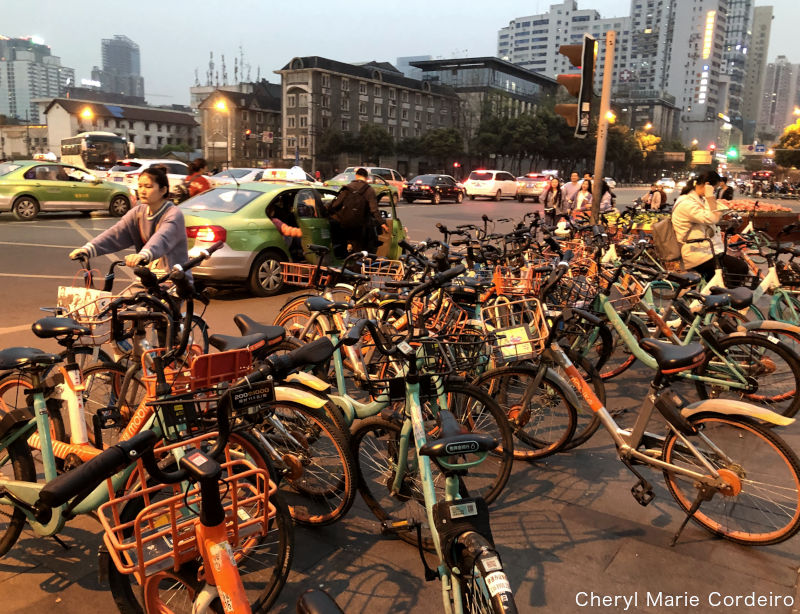
At a junction, vicinity of Chunxi Road, Chengdu, China.
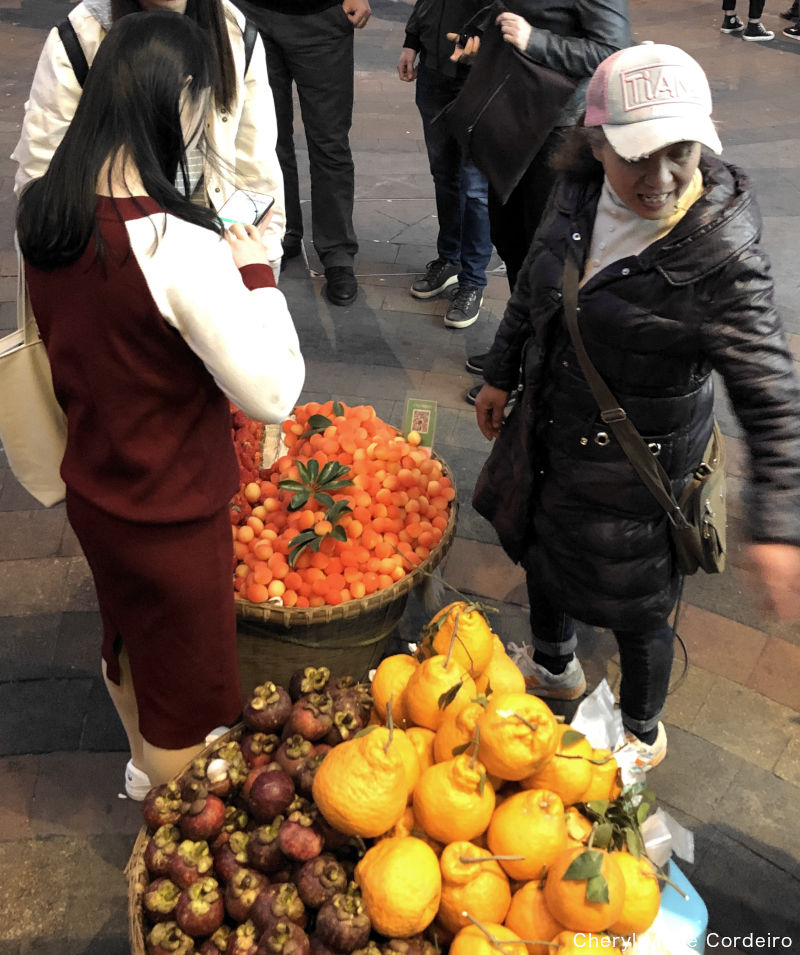
A street vendor.
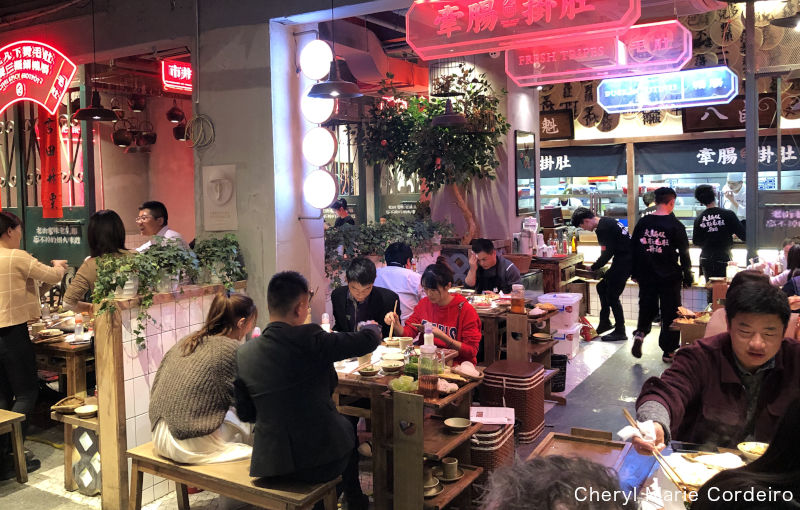
A hotpot restaurant in the vicinity of Chunxi Road, Chengdu, China.
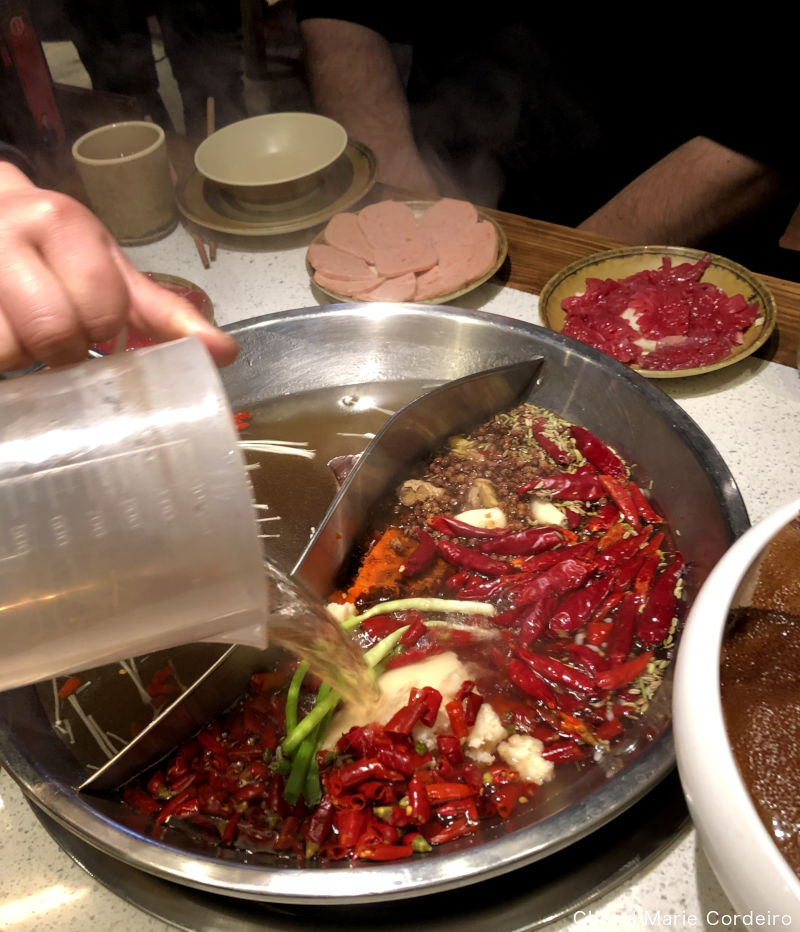
The order of the evening was for a mild and a spicy soup combination. The waiter helps fill the pot with broth and turns on the flame. It takes about ten minutes before the broth gets into a rolling boil.
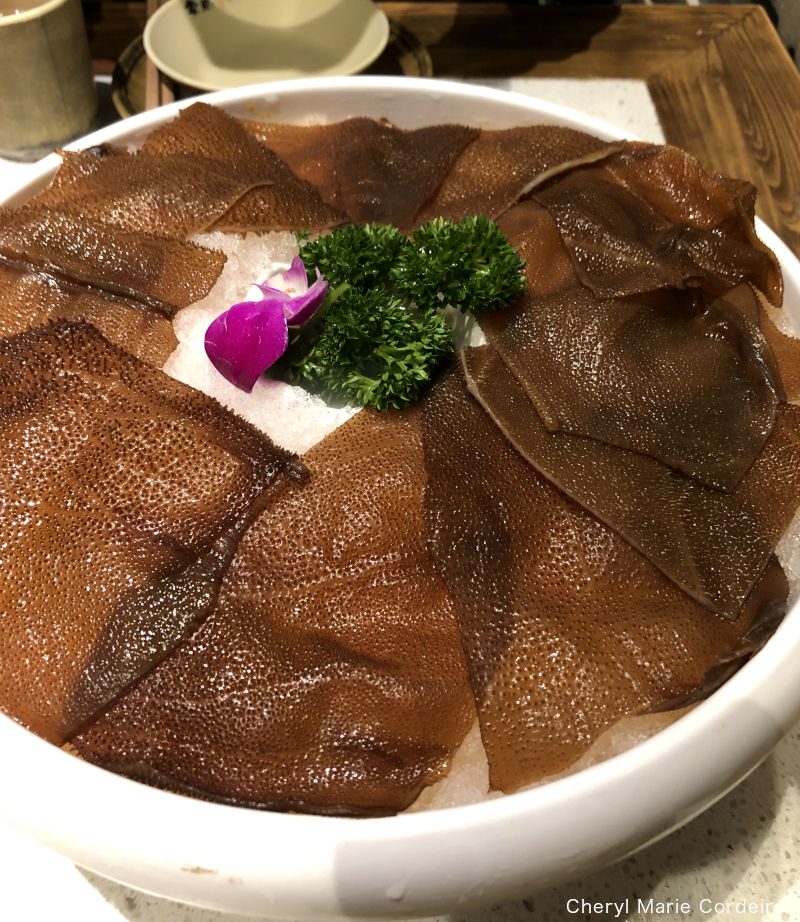
Tripe.
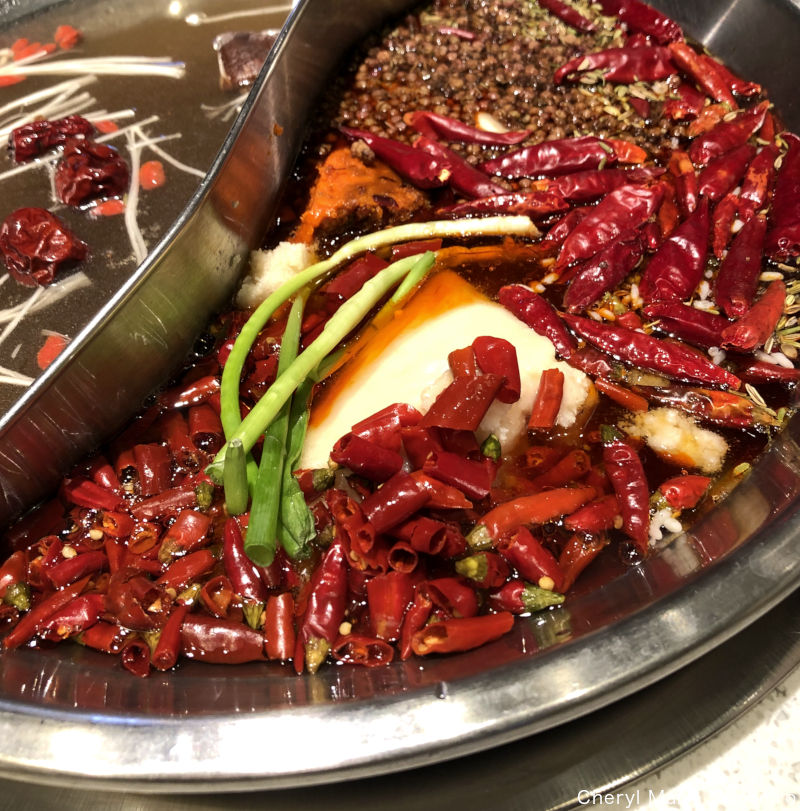
Chili, red and white peppers, garlic and chives are common ingredients to the Sichuan hotpot soup.
References
[1] WEF (2019). 10 cities are predicted to gain megacity status by 2030, World Economic Forum, 6 Feb. 2019. Internet resource at https://bit.ly/2CCJWhN. Retrieved 24 March 2019.
[2] Cordeiro, C.M. (2015). Chengdu research base for giant pandas, Cheryl Marie Cordeiro, 11 Apr. 2015. Internet resource at https://www.cmariec.com/?p=31738. Retrieved 24 March 2019.
[3] Statista (2019). Global prices for a Big Mac in January 2019, by country (in U.S. dollars), Statista, Jan. 2019. Internet resource at https://www.statista.com/statistics/274326/big-mac-index-global-prices-for-a-big-mac/. Retrieved 24 March 2019.
